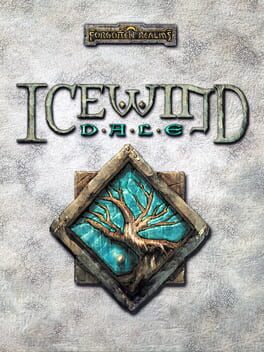

In the northernmost reaches of the Forgotten Realms lies a frozen and untamed region known as Icewind Dale. Journey deep into the Spines of the World mountains, a harsh and unforgiving territory teeming with fearsome and merciless beasts. There you must confront an ancient evil that threatens to unleash an unspeakable horror upon the face of Faerûn.
Reviews View More
A fun linear adventure. The game is mainly combat-driven, with well-thought and balanced encounters in big, multi-level dungeons filled with traps, akin to Baldur's Gate's Durlag's Tower. Obviously, the story and role-playing elements are lacking. I also have my qualms with the Real Time with Pause combat system in general, and found the final boss much too hard compared to previous boss encounters up to this point. However, the game is kept relatively short and well-paced, the enemy variety is good, and it has some of the best background art and music I've seen and heard in an isometric CRPG
A lot of the enjoyment I got out of this came from the fact that it wasn't Baldur's Gate: it's a game where party pathfinding works, the prerendered backgrounds are legible and occasionally interesting, and NPCs are mercifully terse and direct. In dispensing with all the design formalities of a Bioware which had not yet found its niche in dispensing nonthreating fantasy lovers to women ambivalent about becoming adults, it's able to engage with AD&D itself more than any of the other Infinity Engine games were. It's a nicely expedited version of the 2E 1-12 leveling and dungeon-crawling experience, and gives a little vicarious hint of what a late 90s campaign might have been like.
Naturally, this means it inherits a lot of the flaws of this era of D&D. The game's totally trivialized by a physical-damage oriented party capable of casting Haste and divine buffs, particularly if they're also given ranged weapons. Something like half of the game's runtime was devoted to sifting through piles of magic items to search out the most efficient distribution of THACO buffs, something not aided by Infinity's awful inventory menus. The absence of Baldur's Gate's occasional groups of human enemies with strategic equipment or spell lists means that tactics are almost never specific to a given encounter: every fight boils down to the simple contest of each group's health pool and average damage per round that typifies D&D for most of its history. The most that can be said for it is that it's a lot faster than rolling dice manually.
The good pacing makes up for a lot, though, and the look of turn-of-the-millennium D&D supplements is captured perfectly in the art direction. Favorite moment was the last boss killing everyone but the deeply unserious Fighter/Thief gnome, forcing her to survive via three sacks of unused potions. It's the sort of thing that makes it clear what's special about full-party customization: there's no extramechanical version of the character for whom that wasn't the defining moment.
Naturally, this means it inherits a lot of the flaws of this era of D&D. The game's totally trivialized by a physical-damage oriented party capable of casting Haste and divine buffs, particularly if they're also given ranged weapons. Something like half of the game's runtime was devoted to sifting through piles of magic items to search out the most efficient distribution of THACO buffs, something not aided by Infinity's awful inventory menus. The absence of Baldur's Gate's occasional groups of human enemies with strategic equipment or spell lists means that tactics are almost never specific to a given encounter: every fight boils down to the simple contest of each group's health pool and average damage per round that typifies D&D for most of its history. The most that can be said for it is that it's a lot faster than rolling dice manually.
The good pacing makes up for a lot, though, and the look of turn-of-the-millennium D&D supplements is captured perfectly in the art direction. Favorite moment was the last boss killing everyone but the deeply unserious Fighter/Thief gnome, forcing her to survive via three sacks of unused potions. It's the sort of thing that makes it clear what's special about full-party customization: there's no extramechanical version of the character for whom that wasn't the defining moment.
